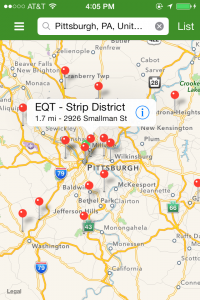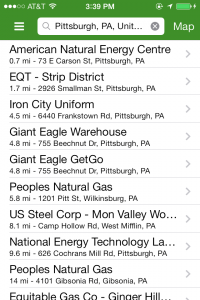New app helps drivers find alternative fuel stations
Traveling from here to Texas in your natural gas-powered truck? You’ll want to know where to refuel it.
The National Renewable Energy Laboratory has developed a resource you can take on the road. A free iPhone app shows the location of more than 15,000 alternative fueling stations throughout the country with services for electric, natural gas, biodiesel, E85, propane or hydrogen vehicles.

 The app gets its information from the Department of Energy’s Alternative Fuels Data Center, which the agency says is the most comprehensive, up-to-date database of alternative fueling stations in the country.
The app gets its information from the Department of Energy’s Alternative Fuels Data Center, which the agency says is the most comprehensive, up-to-date database of alternative fueling stations in the country.
“The number of alternative fuel vehicles on the road has been increasing steadily over the last two decades,” laboratory project manager Trish Cozart said to announce the app. “Drivers and fleets have an unprecedented array of options to cut or eliminate petroleum use, and this new app serves as one more tool to facilitate these transitions.”
The app shows either a map or a list of the 20 fueling stations closest to your current location or one you pick along your route. It allows drivers to select their fuel type and whether they want to search for both public and private stations. Then it provides helpful details like how to get there, when it’s open and how to pay.
The Alternative Fuels Data Center lists 333 alternative fueling stations in Pennsylvania:
- Biodiesel (5 Public, 2 Private)
- Compressed Natural Gas (26 Public, 24 Private)
- Electricity (123 Public, 46 Private)
- Ethanol (30 Public, 3 Private)
- Hydrogen (0 Public, 2 Private)
- Liquified Natural Gas (0 Public, 0 Private)
- Propane (50 Public, 22 Private)
The number of compressed natural gas stations in Pennsylvania is growing with Marcellus Shale development, in part because of state incentives to promote the fuel, but the continued dearth of public stations has discouraged drivers who might otherwise want to use a CNG vehicle.
















